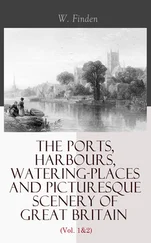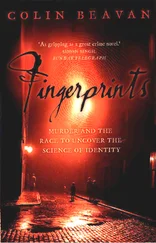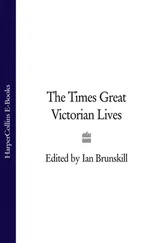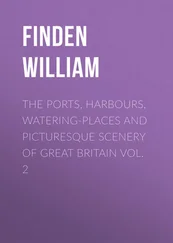William was a great enthusiast for the lumpy, the scaly, the oddities and cast-offs of natural history. In The Naturalist in Australia (1897), his second book about the southern hemisphere, he described his love for the baobab tree, with its swollen trunk and spiky crown of branches. He was struck by the tree's 'tenacity of life', he said. It seemed possessed of a freakish creative force. In the bush, he wrote, it was common to see a baobab's trunk 'prostrated, probably centuries ago by some abnormal storm, out of which a fresh tree has reared itself phoenix-like with renewed youth and vigour'. He knew of only one truly dead baobab, he said - it had been struck by lightning, a 'cataclysmic overthrow' as a result of which the tree's 'destruction is thorough and complete'. William took a picture of its blasted trunk, part of which reared above the ruined tree in the shape of 'a weird monstrous bird that has mounted guard and broods like a disembodied spirit over the destruction wrought'.
In 1904 William was lured back to Australia for eighteen months to work for a private company that was trying to transplant and culture pearl oysters. On his return to England he found backers for his own project to cultivate pearls artificially, and then once more headed for the islands of the South Pacific.
Pearls are the only jewels made by living creatures, glowing objects locked in gnarled, primeval cases. In about 1890 William had become the first man artificially to culture half-pearls, or blister pearls; now he was planning to create fully spherical, or 'free', pearls, which took shape deep in the flesh of the oyster. In 1906 he set up a pearl farm on Thursday Island in the Torres Strait, at the northern tip of the Great Barrier Reef, where he developed a method of opening the shell of the oyster without killing the creature within, then slipping a particle of shell into its fleshy folds. The soft oyster would coat the irritant in thin layers of nacre, eventually producing a prismic, lustrous sphere, the product of shell and flesh. Two Japanese scientists were credited with being the first to create spherical pearls, in 1907, but recent research suggests that William Saville-Kent developed the technique, and perhaps the pearls themselves, before them. He refused to divulge the details of his method to his backers, but agreed to write them down and deposit them in a bank, to be opened in the event of his death.
In 1908 William fell ill and went home to England to die. He succumbed on 11 October to an obstruction of the bowel, the same condition that killed his mother and his first wife. When the investors in his oyster project opened the envelope in the bank, they found nothing intelligible within it - William took the secret of artificial pearl cultivation, with his other secrets, to the grave. His widow, who inherited PS166, covered his tombstone at the church of All Saint's, Milford-on-Sea, with coral skeletons. She sold off the rest of his corals, sponges, shells and pearls, and lived alone in their Hampshire cliff house until her own death eleven years later.
Mary Ann and Elizabeth, the two eldest Kent sisters, had moved in 1886 from their lodgings in Regent's Park to St Peter's Hospital, Wandsworth, an almshouse a mile or so from Lavender Hill which housed forty-two people, and had its own chapel, hall and library. Mary Ann died in 1913, aged eighty-two, leaving her estate (worth PS129) to Elizabeth. Elizabeth followed her nine years after that, at ninety, bequeathing PS250 to a cousin called Constance Amelia Barnes and PS100 to her half-sister Mary Amelia, with whom she had corresponded to the end.
Constance Kent had a gift for invisibility - the townspeople of Dinan in the 1860s and the Millbank prison warders in the 1870s had been struck by her ability to merge with her surroundings, to disappear, and in the 1880s she vanished even more conclusively. The public had no idea where Constance went after leaving gaol, and they were not to find out for almost a century.
It emerged in the 1950s that when Constance was released from prison in 1885 the Reverend Wagner took her to stay with a sisterhood he had established at Buxted, Sussex. Each month she reported to the police at Brighton, about twenty miles away. One of the sisters at Buxted recalled that on her arrival Constance walked 'like a convict, flatly', and had dark spectacles, cropped hair and rough, hardened hands. Her table manners were coarse. She was 'very silent' at first, said the sister, but later talked about the mosaics she made in prison, especially those in the crypt of St Paul's. She never spoke of her family. She told the sisters that she was going to emigrate to Canada and find work as a nurse, under the name Emilie King. This, it turned out, was a half-truth, a misdirection.
In the 1970s it was discovered that early in 1886 Constance sailed for Tasmania with her half-sisters Eveline and Florence, using the alias Emilie Kaye (a homonym of 'Emily K') - Acland had made the crossing a few months before. They joined William and his wife in Hobart. The closeness of these brothers and sisters, who might have been divided by murder, was a reminder of how private, and odd, the emotional life of the family remained.
Constance and William kept a constant and delicate connection for as long as both lived. Constance moved to Brisbane with her brother and his wife in 1889 - she shared a house with them and the shy owls. A year later she went to Melbourne to help look after typhoid victims, and stayed to train as a nurse. She was working as a matron in a private hospital in Perth when William arrived there in 1893. In the mid-1890s she moved to Sydney, which William visited several times between 1895 and 1908. She worked in a lepers' colony at Long Bay, and as matron of an institute for young offenders in Parramatta, on the outskirts of the city.
Constance outlived her brother. In 1911, still using the name Emilie Kaye, she opened a nurses' home in Maitland, north of Sydney, which she ran until her retirement in the mid-1930s. She spent the next decade in rest homes in the suburbs of Sydney. She kept in touch with Mary Amelia's daughter Olive, though Olive did not know that 'Miss Kaye' was her aunt - she thought she was an old friend of her mother and of her aunts Eveline and Florence.* For Christmas 1943 Constance ordered a reference work on birds for her great-nephew, Olive's only child. She sent it to Olive with a letter expressing her disappointment in the book: 'I expected illustrations of nests, eggs etc in a popular form It is a mere bird catalogue.' But at least it was better than most children's books, she added, which were 'grotesque bizarre & hideous . . . all fancy fiction on monstrosities The ugly gollywog has banished the beautiful Fairy.'
When Constance turned one hundred, in February 1944, the local paper pictured her on a sofa, smiling at the camera. The newspaper paid tribute to 'Emilie Kaye', a 'pioneer nurse'. 'Once she nursed lepers,' it announced, oblivious to her deeper past. The King and Queen sent her a congratulatory telegram, and the Archbishop of Sydney called round with a bunch of flowers. Olive attended the birthday celebrations. Emilie Kaye was a 'really wonderful old lady', she reported, 'quite jolly. Everyone seemed fond of her too.'
Two months later Miss Kaye died. In her will she left Olive several mementoes, including a brooch, a gold watch and chain, and two cases, which remained unopened for more than thirty years.
In 1974 Olive and her son made a trip to England. They visited Baynton House, where Olive's mother was born, and learnt the story of the murder at Road Hill. Olive began to wonder whether Emilie Kaye had been her lost aunt, the murderess Constance Kent. Back at home in Australia, Olive and her son cut open the cases that 'Miss Kaye' had left and found in one a daguerrotype of Edward, Constance's older brother, who had died in Havana of yellow fever, and in the other a portrait of the first Mrs Kent.
Читать дальше












